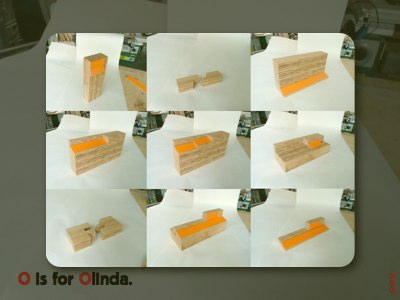The Experience Stack
These are some other experiments. The reason you see some pieces as two segments is that the radio is modular. Remember I was talking about web APIs for adaptive design? If APIs can give websites lightness and make them more quickly appropriate to their audiences, it should work for hardware too.
The hardware API here is a simple serial connection that sends out events of what the radio is doing, and accepts instructions, using an open and documented instruction set.
The module we’re building, to exercise this API, is a social module. It has 6 lights on it which represent your six closest friends. When one of your friends is listening to their radio, or to the BBC’s online radio player, the light comes on. You push a button and you see what they’re listening to. You like it, so you hit the retune button to tune in. That’s the approach, engage, commit triptych again, by the way.
What I’m proudest about, with this radio, is that when we hand it over to the BBC, they’re releasing their IPR in the design mark and the interaction concepts under the equivalent of a Creative Commons Attribution license. That means any radio manufacturer can pick up the ideas and use them for free, without getting contracts signed with the BBC, without even speaking to them, so long as they stick attribution and a copyright message on the bottom.
That’s how we’re hoping to help the industry go forwards.
